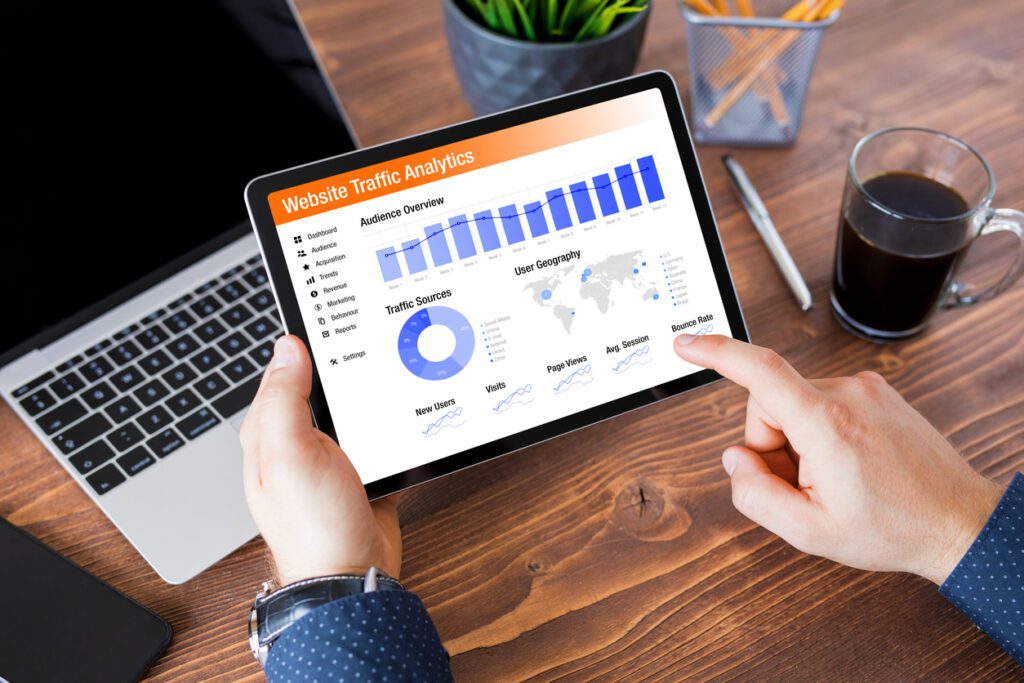More than a quarter of the U.S. adult population has some disability. Further statistics indicate that 75% of people with disabilities use the internet daily. More demographic-specific figures show that those with a vision disability comprise 4.9% of the population, requiring a screen reader, high-contrast pages for those with colorblindness, and other accessibility features to navigate the websites they visit. Others have impaired hand functions, which can limit their use of a keyboard or mouse, while those with hearing impairments require special accessibilities such as video captions and transcripts. Interested in the interplay of Web Accessibility and SEO? Read on to learn more.
A recent report by The WebAIM Million on the accessibility of the top one million sites’ home pages detected multiple errors on the pages. The report found that 5.3% of the home page elements had an accessibility error. Some detected errors included low-contrast text, missing alternative text for images, empty links, missing document language, empty buttons, and missing form input labels.
Such errors affect the user experience, impacting SEO negatively. In addition, websites lacking accessibility features to aid navigation among people with disabilities can attract serious legal implications. For instance, a recent report by UsableNet showed an increase in accessibility lawsuits, with e-Commerce sites being the highest hit at 73.66% of all the cases.
Generally, every business with an online presence is vulnerable despite the industry. While big brands have been the most hit by lawsuits in the past, recent statistics show a changing trend where companies with less than $50 million in annual revenue have the highest number of cases.
This post looks into the relationship between web accessibility and SEO and ways you can make your website accessible and ADA-compliant while improving your SEO.
Table of Contents
- What Is Web Accessibility?
- Principles of Web Accessibility
- Benefits of Website Accessibility
- Improved User Experience
- Increased Website Traffic
- Reduced risk of legal risks
- Improved Website SEO
- Positive Brand Reputation
- Annual ADA Tax Credit
- How to Create Accessible Websites
- Start Optimizing Your Website for Improved Accessibility and SEO
What Is Web Accessibility?
Website accessibility refers to the ease with which everyone uses your website, including people with disabilities such as vision impairment, hearing impairment, motor disabilities, etc. It encompasses all aspects of website navigability, including image alt text, content organization, anchor text, heading tags, and more.
Principles of Accessibility
An accessible website should cater to visitors’ needs without impeding their ability to understand, navigate, perceive, and interact with it. This means it must meet the four POUR principles – perceivable, operable, understandable, and robust.
- Perceivable – Must remove accessibility barriers, e.g., by supplying alternative texts to be accessible to screen readers.
- Operable – Must be operable on all devices.
- Understandable – The information and interface must be understandable to the users.
- Robust – Must be accessible and easy to be interpreted by different technologies and platforms.

Benefits of Website Accessibility
Making your website accessible enhances its usability for everyone, regardless of their physical limitations or device. This translates to other benefits, including improved SEO and ADA compliance, to name a few.
Let’s discuss them in detail.
Improved User Experience
Improving your website accessibility automatically impacts the user experience. Easy navigation ensures all your visitors find what they’re looking for, regardless of their disability or device. This leads to increased user satisfaction and brand perception, crucial factors in winning their trust and loyalty.
Reduced legal risks
Inaccessible websites pose significant legal implications. Making your website compliant with the Americans with Disabilities Act (ADA) should be a priority.
ADA compliance requires all businesses with an online presence to be accessible to people with disabilities. Specifically, ADA III mandates public services, electronic and information technology to be accessible to individuals with disabilities, and DOJ affirmed in 2022 that websites fall under this classification. Effectively, accessibility has become a web standard like having SSL or GDPR.
Websites lacking essential accessibility features risk costly lawsuits. And while inaccessible desktop websites dominate the cases, accessibility of other digital aspects like the mobile app, video accessibility, and mobile website are also common.

Improved Website SEO
Accessible websites perform better in SEO for apparent reasons. Making the website user-friendly to everyone opens it to more visitors, translating to increased traffic. In addition, improved user experience has a positive impact on dwell time. A low bounce rate signals to the search engines a page provides value to the visitor, hence is likely to be crawled and ranked more. The more the site receives traffic, the better it performs in SEO.
To support this, Semrush partnered with AccessibilityChecker.org and BuiltWith in a study that analyzed 847 domains to find whether digital accessibility improves online discoverability. According to their findings, upon installing an accessibility solution, the domains’ organic search traffic increased by 12%. Overall, 73.4% of the domains had an increase in organic traffic, and 66.1% recorded a boost of up to 50% in monthly traffic.
Positive Brand Reputation
Having an accessible website complete with an accessibility statement can help your brand reputation. Besides being inclusive and giving everyone a satisfying browsing experience, your visitors (especially those with disabilities) are more likely to recommend your website to their connections (family and friends).
Annual ADA Tax Credit
If your business has less than 30 full-time employees and has generated less than $1 million in revenue in the previous tax year, you can qualify for an annual ADA tax credit. You can claim 50% of expenditures incurred in web accessibility and ADA compliance practices up to $10,250. Examples of qualifying expenditures may include the installation of accessibility solutions on your website, initial and ongoing remediation files and media, native accessibility, etc.

How to Create Accessible and SEO-Friendly Websites
The average settlement for small businesses sued for ADA non-compliance is $10,000, without factoring in the legal fees, usually charged at about $250-300 per hour. This means if someone sued you for non-compliance, you risk losing multiple times the amount you would spend to create an accessible site. Not mentioning the other benefits you miss when your site is inaccessible. Think of the poor user experience and its impact on SEO performance and conversions.
In most cases, optimizing your site for accessibility requires some simple interventions. For instance, you can increase contrast ratios to make the text easier to read for the vision impaired, make the buttons larger for those with impaired hand function, or put captions on videos for those with hearing impairment.
Generally, here are some elements to focus on when creating accessible websites.
- Page titles provide context on what a webpage is about. When you open multiple tabs, page titles differentiate the content. Creating page titles with the user experience in mind is essential, as those using screen readers rely on the title information to navigate between pages or tabs.
- Heading structure – Assistive technologies rely on headings to navigate and understand the different sections of a page. Using relevant heading tags is crucial to increasing page accessibility.
- Anchor text provides insight into what the linked content is all about. Optimizing anchor texts to make them highly relevant to the landing page content is an excellent way to increase a page’s accessibility and improve user experience. For instance, when a screen reader comes across a link, it reads the anchor text, then the user can decide whether they want to visit the page.
- Image alt text – In the same way image alt text help crawlers understand the images, they also provide a textual alternative to website visitors with visual impairments. Optimizing your website images by including alt text is crucial to making it ADA-compliant.
- Video captions and transcripts – Ensure your video content has appropriate captions and transcripts to cater to users with hearing impairments.
- Sitemap helps visitors find content more easily. Providing a sitemap allows visitors (including those using a screen reader) to access content quickly, especially on a site with complex navigation.
There are many other elements of your web pages you can optimize for improved accessibility besides the ones we have highlighted. In all these, one thing you will realize is the intersection between accessibility and SEO. Generally, the practices you use to optimize web pages for accessibility also benefit SEO.
Start Optimizing Your Website for Improved Accessibility and SEO
Investing in web accessibility goes beyond compliance. It’s a robust digital marketing strategy you can leverage to improve your SEO, increase website traffic, enhance your brand reputation, and ultimately boost conversions. Optimizing page titles, heading structures, anchor texts, image alt text, and providing video captions and sitemap are some elements you can start working on to get your website accessible and SEO optimized. But don’t forget these are just a few examples. There’s a sea of other page aspects that require addressing to make your website fully compliant.
If you’re unsure how to handle this, don’t worry. Your SEO Sommelier is here to help. Whether you need assistance with UX, search engine optimization, or even content creation, talk to us and let’s design a custom solution for your website.
Ready to get started today on your own? I recommend accessiBe as your accessibility solution. They offer an easy-to-install widget on your website.
Interested in learning more? Get in touch now and book an appointment.




